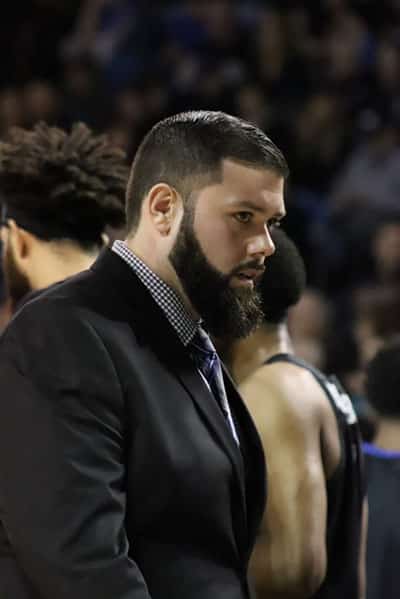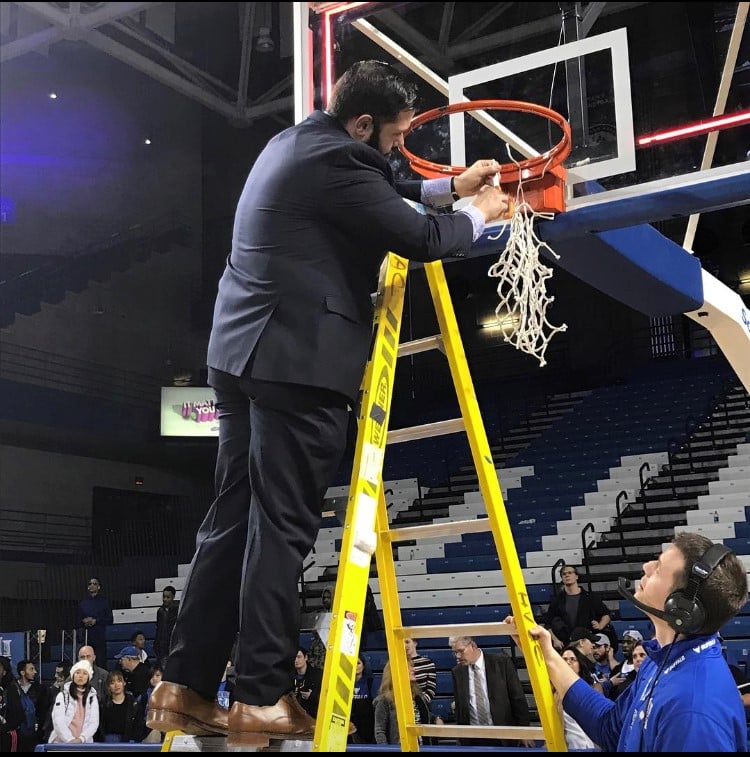Athletic Trainer Spotlight | Andy Bliz of University of Buffalo
Athletic Trainer for the University of Buffalo, Andy Bliz, discusses his philosophy for getting athletes back on the court faster and why movement is the best medicine for a speedy recovery.
 What initially attracted you to athletic training?
What initially attracted you to athletic training?
I have always been involved in sports. In high school, I played football, wrestled and did track and field. When I first started college, I started in the nursing program, but I gravitated more towards athletic training.
I completed my undergraduate clinical education at Western Michigan University with a degree in Athletic Training. Through my clinical hours, I rotated with many different sports. I went to graduate school at Eastern Michigan University and received my Master’s Degree in Sports Management.
What is your philosophy in regards to athletic training?
I believe that athletes need to get the blood flowing and the lymph system pumping. With faster recovery, athletes can return to play much quicker than doing RICE.
What sports do you typically work with?
I work primarily with the men’s basketball team at the University at Buffalo. I travel everywhere the team goes, and our main travel months are from November through the end of March. We also have off-season practice and conditioning throughout the year, so I am constantly working with the players.
What shifts have you seen in athletic training throughout the years?
The biggest shift has been from rest to movement. It used to be that you would cast ACLs, now you get them moving quicker. With ankle sprains we know getting the ankle doing rehab quicker pays off. There has been a shift away from just resting with injuries. Instead, the new focus is that tomorrow is day one of recovery and rehab.
 What is the most difficult aspect about being an athletic trainer?
What is the most difficult aspect about being an athletic trainer?
There is a huge time commitment with athletic training. Also, you have to manage the athlete’s drive to compete in an unsafe environment. Sometimes you have to slow an athlete down from running through the brick wall with injuries. As an athletic trainer, you have to ensure that a player is practicing and competing safely.
How were you introduced to the Marc Pro?
Initially, I heard about the device when I was at Michigan State. When I arrived at UB, I had the opportunity to get one new thing for the training room. I contacted Gary Reinl and purchased a Marc Pro.
What are your thoughts about the “Ice Age”?
I try to stay away from icing injuries as much as possible. I read Gary’s book, “Iced!: The Illusionary Treatment Option.” The concepts that Gary discusses, sparked my interest and confirmed some of my ideas. I was able to learn more about ice and how it can hinder recovery instead of promoting it. Now, I primarily use ice to cool the water down for Gatorade.
How many Marc Pros do you have at the university?
We have 6 to 7 units total at University at Buffalo.
What is your Marc Pro protocol at the University at Buffalo?
We keep the units in the training room and keep each athlete hooked up to the device for 20 to 30 minutes at a time. If an athlete’s schedule permits, then we encourage them to be hooked up to the device for longer.
I also travel with a Marc Pro so I can set players up with it during bus rides and in hotel rooms.
We sometimes will send athletes home with a Marc Pro unit, but only in rare circumstances. We tell athletes to use the Marc Pro at home for at least 2 to 3 hours at a time and recommend that they sleep with the device running too.
 What do your athletes like best about the Marc Pro?
What do your athletes like best about the Marc Pro?
The athletes like that they feel recovered and looser than before a treatment.
How has the Marc Pro helped you and your team in the training room?
The Marc Pro allows us to setup athletes to get recovered quickly. An athlete’s joints might not be moving really well when they first come into the training room do to any swelling and edema, but after using the Marc Pro, they feel looser and the joint less stiff. This makes rehab more functional and appropriate than keeping an athlete on a training room table doing ABCs.
What is your favorite part about working with athletes on a daily basis?
My favorite part of the job is helping an athlete get back on the court post-injury. Seeing an athlete run after a major injury or back on the field after surgery is the best feeling.
What advice would you give to athletes about recovery?
Be active. The worst thing athletes can do is to not be active when they are sore. Heading for a jog or spinning on the bike can help flush out the body when you are sore. Athletes also need to sleep at least 7 to 8 hours and fuel with the proper nutrition.
Continue Reading…
Why RICE is Outdated & What you Should do Instead
Athletic Trainer Spotlight | Ron Linfonte of St. John’s University
 What is the most difficult aspect about being an athletic trainer?
What is the most difficult aspect about being an athletic trainer? What do your athletes like best about the Marc Pro?
What do your athletes like best about the Marc Pro?